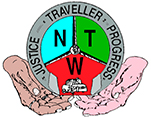The History of Travellers
There are many theories about our origin. The one I most commonly meet is that we are the descendants of the people who lost their land at the time of the Famine. Among settled people this notion seems to have a lot of support, but I am going to have to disagree with this theory.
Let me explain by drawing your attention to the United States where there are more than 10,000 Irish Travellers living today. And yes, there are Irish Travellers with names like Collins, Sherlocks, McDonaghs, Maughans, Carrolls and Murphy. There’s a large contingent of Irish Travellers in South Carolina, Georgia and Texas.
It is important to remember that they play a large part in our history too. They are very traditional in their lifestyle and very much identify as being Travellers. There are some very interesting facts about them and they have progressed very similarly to the families who live in Ireland we can see a parallel.
So how come they are over in the United States? Well just like the tens of thousands of displaced Irish who travelled on the “coffin” ships to America, so did some of the Irish Travellers. They left Ireland during the mid 19th century. The difference I point to though is that they maintained all of the lifestyle, customs and marriage patterns of the Travelling people when they reached America. We can assume from this that these patterns were well established among the families ever before they left Ireland, so Travellers then predate the famine.

Mentions in History

It is very hard to say where in history Travellers come. We’ve always existed, but the disasters in history like the famine would have swelled the ranks of Travellers on the road. At one time there were more than three million people on the roadside in Ireland. Within that three million Travellers were still easily identified. It would have been around the time of the Poor Law Commission these statistics would have come out. They were identifiable because they were more than one generation. There were grannies, great-grannies and daughters. The other people were all small families. Most of these would have moved back on to the land once they got the chance, not so the Travellers.
I am not trying to ‘prove’ the origins of Travellers in Irish society, but to disprove that we only came about because of a disaster in Irish history. The idea that we are dropouts or misfits, because either we or our ancestors couldn’t cope, is wrong:
Is there any other hints of older historical roots for Travellers?
A law was passed in 1562 during the reign of Queen Elizabeth I stating that it was illegal to be an Egyptian or a Counterfeit Egyptian. The English law said:
“Those in company or fellowship of vagabonds, commonly called or calling themselves Egyptians, and also those counterfeiting, transforming or disguising themselves as such by their apparel, speech or other behaviour, shall do so under pain of death.”
In Ireland to be an Egyptian or a counterfeit Egyptian the penalty was deportation.
The word Gypsy comes from Egyptian. When they came to this part of Europe they said they came from ‘Little Egypt’. So they came as Egyptians. Why in this country would you have a law banning counterfeit Egyptians? There was an explanatory note with this law saying who they actually meant.
They talked about a group of people who had the attire, work practice, similar marriage pattern, lifestyle and family groups but who were not Egyptian. This described Travellers to a ‘T’. So there were Travellers in 1562. The word Gypsy is a group name for many different extended groups which include Shinti, Rom and Calderash. Gypsies never established themselves in any great numbers in Ireland because their lifestyle and especially their work habits were already to be found in larger numbers among Irish Travellers and Ireland is only a small country. Some Gypsies may have inter married with Travelling People just as some of those who lost their farms in Famine times may have joined with the Travellers.
If we go further back to the 12th Century we get the word “tinker” (Tinceard = Tin craft) appearing many times in written documents and there clearly was a group of Travelling crafts people who played an important role in Irish society and Irish economy. Tinsmithing is still practiced today by a small number of Travellers, who would have gained those skills through their families.
